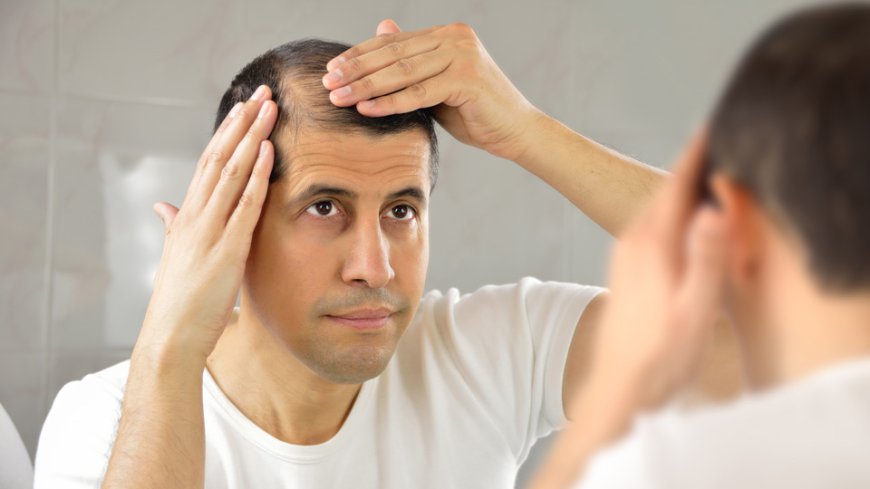The Pros and Cons of Using Finasteride for Hair Loss
Finasteride is especially recommended for people with male pattern baldness. Learn more about Finasteride for Hair Loss in Dubai and avoid baldness for good.

Hair loss is a common concern that affects millions of men and women worldwide. Among the various treatments available, finasteride has gained significant attention for its effectiveness in treating androgenetic alopecia, commonly known as male or female pattern baldness. This article will explore the pros and cons of using Finasteride For Hair Loss in Dubai, helping you make an informed decision about whether this treatment is right for you.
Understanding Finasteride:
Finasteride is an oral medication that works by inhibiting the action of an enzyme called 5-alpha reductase. This enzyme converts testosterone into dihydrotestosterone (DHT), a hormone that plays a crucial role in hair loss for those genetically predisposed to androgenetic alopecia. By reducing DHT levels in the body, finasteride can slow down hair loss and, in some cases, promote regrowth.
How Finasteride Works:
When taken daily, finasteride reduces DHT levels by approximately 70%. This reduction helps to reverse the miniaturization of hair follicles, a process caused by DHT that leads to thinner and shorter hair over time. Consequently, many users experience a noticeable improvement in hair density and overall hair health.
Pros of Using Finasteride:
Effective Hair Loss Treatment:
Numerous studies have demonstrated the effectiveness of finasteride in treating hair loss. Research indicates that up to 90% of men who use finasteride experience a reduction in hair loss, and many see regrowth within the first year of treatment. Its efficacy makes it one of the most recommended medications for androgenetic alopecia.
Convenience of Oral Administration:
Finasteride is taken in pill form, typically once a day, making it easy to incorporate into a daily routine. Unlike topical treatments, which may require specific application techniques and timing, oral finasteride offers a straightforward approach to hair loss management.
Minimal Side Effects for Most Users:
While finasteride can cause side effects, many users tolerate it well. Most individuals experience minimal to no adverse effects, making it a suitable option for many people seeking hair restoration. Commonly reported side effects, such as mild sexual dysfunction, occur in a small percentage of users and often resolve over time.
Long-Term Use Benefits:
Finasteride has been shown to provide long-term benefits when used consistently. Many users maintain their results for years as long as they continue taking the medication. This makes it a valuable option for individuals looking for a sustainable solution to hair loss.
Combination with Other Treatments:
Finasteride can be effectively combined with other hair loss treatments, such as minoxidil, for enhanced results. This combination therapy can provide a synergistic effect, further improving hair density and growth.
Cons of Using Finasteride:
Potential Side Effects:
While many users experience minimal side effects, finasteride is not without its risks. Some individuals report sexual side effects, including decreased libido, erectile dysfunction, and ejaculation disorders. Although these side effects are often reversible upon discontinuation of the medication, they can be distressing for some users.
Not Suitable for Everyone:
Finasteride is primarily approved for use in men, and its effectiveness in women, especially those of childbearing age, is less clear. Women who are pregnant or planning to become pregnant should avoid finasteride due to the risk of fetal harm. Therefore, it is crucial to consult a healthcare professional before starting treatment.
Delayed Results:
Unlike some hair restoration treatments that provide immediate results, finasteride may take several months to show noticeable improvements. Users may not see the full benefits until at least three to six months into treatment, which can be discouraging for those seeking quick solutions.
Long-Term Commitment Required:
For finasteride to be effective, it must be taken continuously. If treatment is stopped, any regrowth achieved will likely be lost within a year. This long-term commitment can be a disadvantage for those who may prefer a more temporary or less demanding treatment option.
Cost Considerations:
Finasteride is a prescription medication, and while it may be relatively affordable compared to some hair transplant options, the ongoing cost can add up over time. Depending on your insurance coverage, you may need to factor this into your budget for hair loss treatments.
Conclusion:
Finasteride can be an effective and convenient option for individuals experiencing hair loss, particularly those suffering from androgenetic alopecia. Its ability to reduce DHT levels and promote hair regrowth makes it a popular choice among men seeking to preserve their hair. However, it is essential to weigh the potential side effects, the need for a long-term commitment, and the cost associated with ongoing treatment.
If you're considering finasteride, consult a healthcare professional to discuss your specific situation, potential risks, and whether this treatment aligns with your goals. While finasteride may not be suitable for everyone, understanding its pros and cons will help you make an informed decision on your hair loss journey.

 Royal Clinic
Royal Clinic